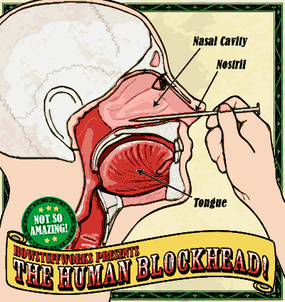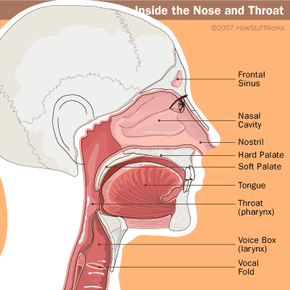Anatomy and the Human Blockhead
According to the Coney Island Circus Sideshow, performer Melvin Burkhart invented the trick known as the human blockhead. The term comes from the name he used for his act. [Source: Coney Island Circus Sideshow]. It relies on the structure of the human skull. The skull is a collection of 22 bones, most of which are fused together at joints called sutures. These fused bones form a covering that protects your brain. Although much of the skull looks like one solid piece, it's also full of holes and spaces. These include the sinuses, the eye sockets and the foramen magnum, where the brain stem exits the skull.
The physical features in a person's face are the result of the way skin, fat and muscle tissue lie over this bony structure. An exception is the human nose. The external portion of the nose is mostly cartilage and connective tissue covered with skin. Hair and mucous line the nose and protect the interior nasal passageways from dust, debris and other foreign substances.
Advertisement
The external portion of the nose is a little deceptive. Two nostrils appear to lead almost straight up into the nasal passageway. In reality, the nasal cavity, which connects the nose to the throat, leads almost straight back. Its ceiling is approximately even with the top of the nose, just below the eyes. Its floor tends to be almost level with the alar cartilage, which forms the openings for the nostrils.

The nasal cavity isn't entirely smooth and straight. Its walls are made up of several grooves known as conchae. These grooves hold on to moisture when you exhale through your nose, which helps keep your nasal passages from drying out. Mucous membranes line all of these surfaces, providing lubrication and protection.
In the human blockhead act, the performer taps a nail straight back into this passageway. Sometimes, he has to move the lower edge of his nostril out of the way to reach the nasal cavity. In some performers, this effect is pronounced -- the protruding nail seems to push the edge of the nostril up like a pig's snout.
Learning to guide a nail into this cavity isn't always easy. Next, we'll take a look at some of the obstacles the performer has to overcome, as well as the hazards of the human blockhead.
